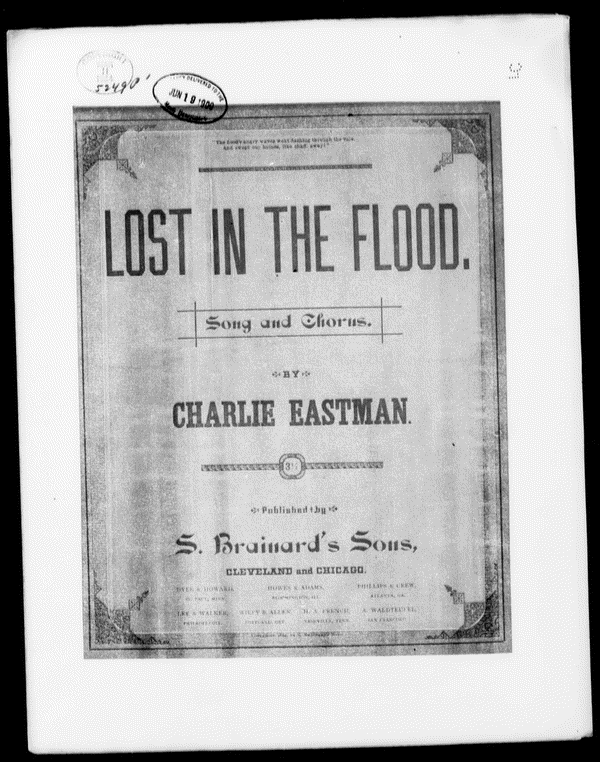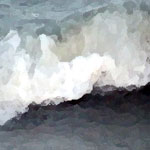Image Analysis:
1. When and where was this image created?
2. What is happening in this image?
3. What specific people/objects do you see?
4. What do you notice about the object's condition or the people's expressions
or appearance?
5. Why would the person choose this particular scene to capture?
6. What information do the words accompanying the image provide?
7. What is missing from the image?
8. What problems for people are suggested by the images?
9. What is interesting or surprising about this image?
10. What additional information about the event did you learn from
this image?
Personal Account Analysis:
1. When and where did this interview take place?
2. What encounter with nature is described in this personal account?
3. How long after the event occurred was this inteview made?
4. What words or phrases best create a visual image of the event?
5. What attitude towards this event does the person seem to have?
6. Who or what at does this person seem to believe is responsible for
this event occurring?
7. What problems or effects does the event seem to have had on people's
lives?
8. What lesson does this person seem to have learned from this
event?
9. Is there anything interesting or surprising to you about this person's
reaction to the situation?
10. What new insights into the natural event does this interview provide
you?
Lyrics Analysis:
1. If there is a cover to this piece of sheet music, examine it carefully.
What message does the cover give you about the event?
2. What natural event is this song about?
3. Read through the lyrics. Write a summary describing the main
idea of the song.
4. List any words in the song with which you are not familiar. Find
their meanings in a dictionary.
5. Choose one or two phrases of the song that are interesting to you.
Explain why they caught your attention.
6. Who or what does the song writer feel is responsible for the event?
7. What problems or effects of the event are mentioned in the song?
8. What new insights does this song give you about the event described?
9. What surprises you about the song?
10. What questions do you have?
Additional Resources:
1. What additional information
about the event did the other sources
provide? |

Photo:
National Park Service
Source for
original photo from the National Park Service's Johnstown Flood Memorial.
Personal Account:
Statement of D. W. C. Bidwell
Q. I wish you would state in your own way whether you were up at South
Fork dam at the time of the big flood, what time you went there, and what
you saw.
A. I left here on Wednesday, May 29th, andwent to South Fork, and went
to the Club House of the South Fork Fishing and Hunting Club . Thursday,
it commenced to rain---Thursday evening it rained very hard. I noticed
on the way up from the station at South Fork to the dam that the roads
were very bad, and showed there had been a great deal of rain falling.
The roads were unusually bad. On Thursday evening, it rained very hard;
Thursday night, the rain appeared to come down i torrents; it seemed as
if a cataract had broken loose. I got up in my room, fearful that some
damage would occur to the building, opened the windows to see if I could
see anything outside to note the extent of the rainstorm. On Friday morning,
we left the Club House at 8 o'clock and passed over the dam about half-past
eight, at which time the water was rising at the rate of ten inches an
hour. The water was then, as near as I could estimate, within four feet
of the top of the dam. The weste weir was running out its full capacity---a
large volume of water---
Q. Do you know what the size of that waste weir was?
A. 75 feet wide, and I think it was nearly 15 feet in depth from the bottom
of the weir to the top of the dam.
Q. Which side of the dam was it on?
A. On the east side; it was cut through the rock.
Q. Mr. Bidwell, how many years had you been in the habit of going up to
South Fork before this flood?
A. Only two years.
Q. Had you seen a flood or floods in the Conemaugh before this last one?
A. Last August we had a very heavy rain, and the water was up within about
four feet of the crest of the dam.
Q. Did the dam hold secure in every way?
A. The dam held the water securely.
Q. After you left the dam that morning, where did you go?
A. I went down to the station at South Fork. The rain continued that day.
It rained all that day Friday. I got down to South Fork at nine o'clock,
and I watched the rising of the Conemaugh creek in the rear of the station
house from nine until twelve o'clock. The creek rose seven feet.
Q. Could you tell that by marks?
A. Yes, sir.
Q. What were they?
A. We had marks on the trees and fences. We would go out from time to time,
and used to note the rise of the water during that time. The road bridge
just above the station was carried out by the flood. The creek rose to
the foot of the embankment at the station house; by that time, it had flooded
the bottom between the opposite bank and the station house.
Q. Had it driven the people out of their houses?
A. Well, there are not very many houses along the creek; there were some
outbuildings, and they were flooded out.
Q. What do you know of any notice being sent down there by Mr. Unger?
A. I saw Mr. Parke, the engineer in charge of the work at the Club grounds;
I saw him come down there on horseback,and stop in front of the Supply
Company's store and make a statement to the people standing about that
the water was then running over the top of the dam, and there was very
great danger of it giving was. There was also a messenger sent up from
South Fork on horseback, leaving about 1 o'clock, who returned
about 12, and made the same statement to us; that the water was then
running over the crest of the dam.
Q. What time was it that Mr. Parke made that announcement in front of the
store?
A. Mr. Parke was there, I think, about half-past 12. This other man I speak
of, got down first, and Parke about 12.30.
Q. Where were you when the dam broke?
A. I was standing up near the station at South Fork.
Q. Did you see it coming?
A. Yes, sir.
Q. What did it look like?
A. Well, it came in a large volume with a good deal of debris. All this
time it was raining, and I was standing at the station house, watching
the creek, and going outside with my umbrella and standing in the rain
to see what was going on outside, and about half-past 2 o'clock, I had
a conversation with Mr. Dougherty about the passenger train standing in
the bend of the road at the tower. The New York and Chicago Limited came
there with a train of six cars in the morning, and Mr. Dougherty got the
engineer to run his train up past the station; and as that train went up
above the station, a freight train standing in at the left on the switch
near the Supply Company store, started up also and got up out of the way.
There was a freight train standing on the right hand siding down at the
coal works that started, and had very little steam on the engine, and the
locomotive just got over the iron bridge when the flood struck it, and
carried off the train. There was nothing left there but the locomotive.
Q. And all the tracks where the trains had been standing, were washed over,
were they?
A. Yes, sir, and the iron bridge was carried out; and the tower house was
taken out.
Source document.
Lyrics:

Lost in the Flood
The flood's angry waves went dashing thro' the vale,
And swept over our homes, like chaff, away!
No weak human hand could stay its angry course,
As it rose from day to day!
The homes that we loved, oh, where are they
And treasures no wealth can restore!
All lost in the flood that came so swiftly on,
And we ne'er shall see them any more.
Lost in the flood, lost in the flood,
The homes that we loved so well!
Oh dark was the sky, wild raged the storm
Thro' the valley we loved to dwell.
We were homeless and poor, and knew not where to go;
We had no shelter, warmth or food;
We fled from the dear, dear valley that we loved,
Fled before the raging flood.
May heav'n bless the ones who heard our cry,
And answered throughout the land!
We ne'er shall forget that dark and dismal time,
When we fled, a homeless band!
Original
document
Music
for the Nation: American Sheet Music, 1870-1885, Library of Congress
Other Resources:
NPS: Johnstown Flood Memorial
Johnstown Flood Museum
National
Geographic on Flood
NPS Info on
Johnstown Flood
Back to Nature's Fury Home
Page
Nature's Fury web pages published and maintained by P.
Solfest and K. Wardean
E-mail comments welcome at:
psolfest@altoona.k12.wi.us
kwardean@altoona.k12.wi.us
|
|


